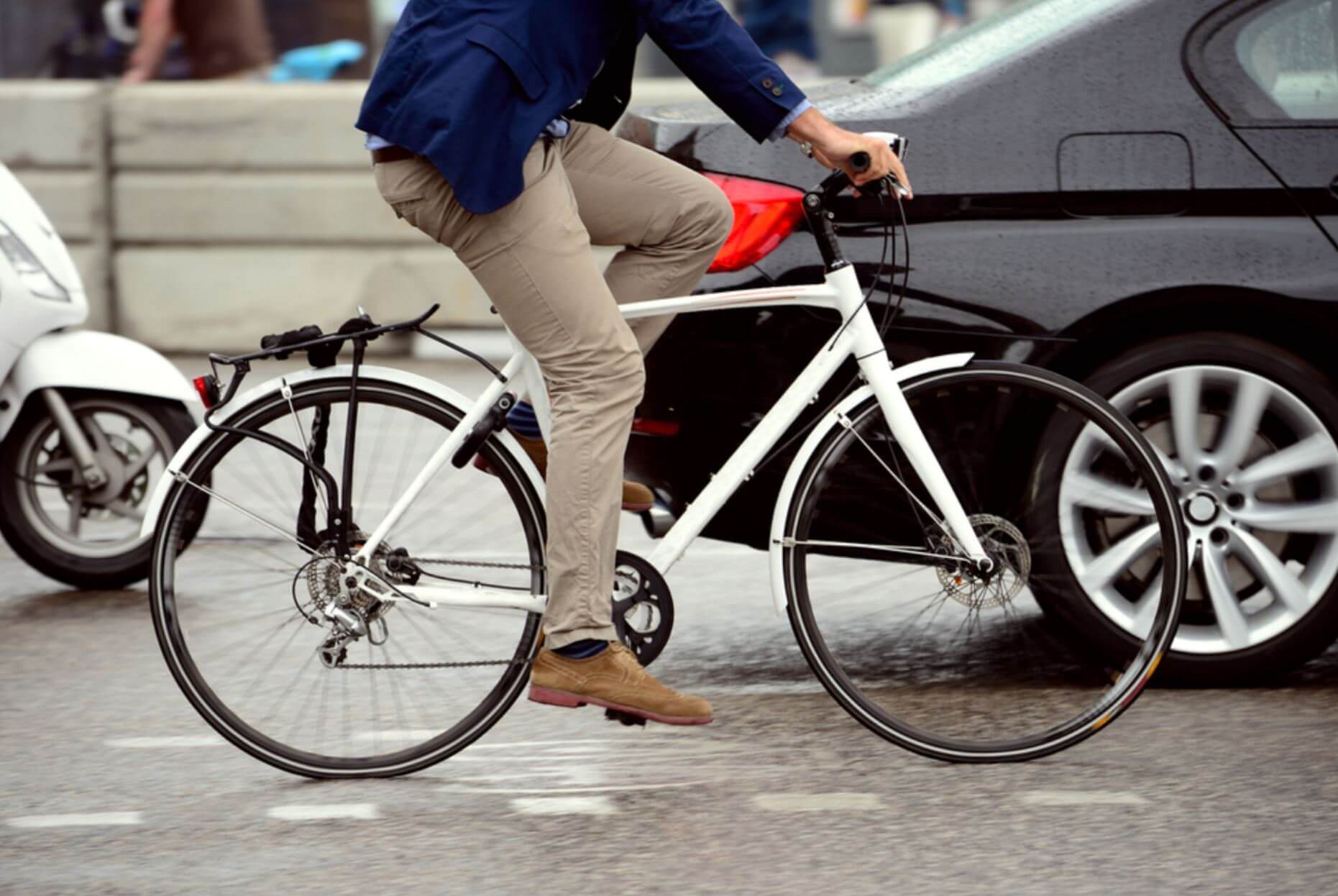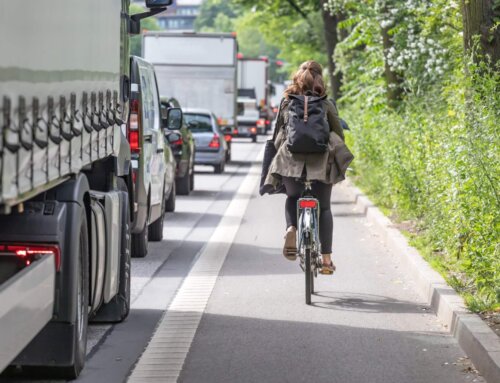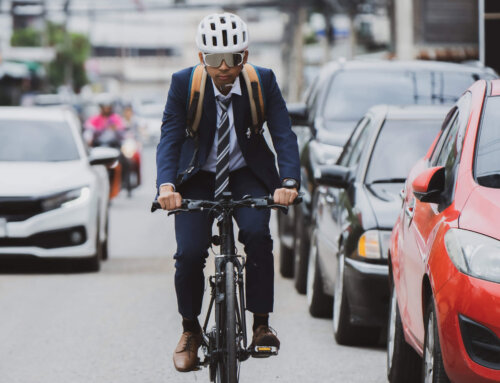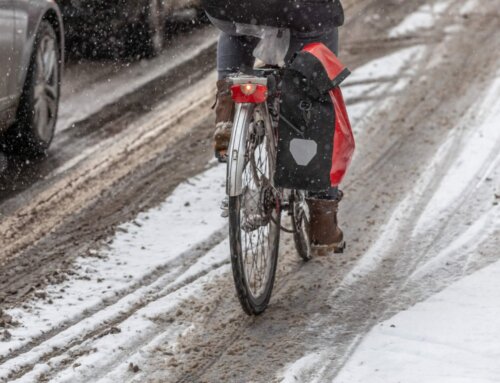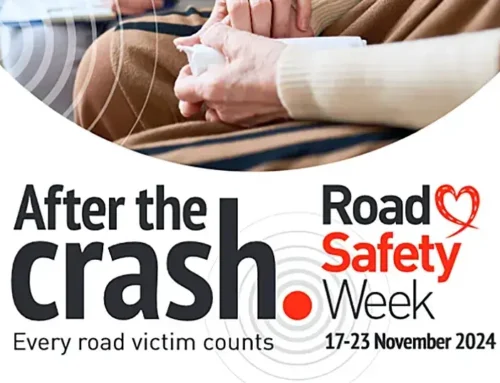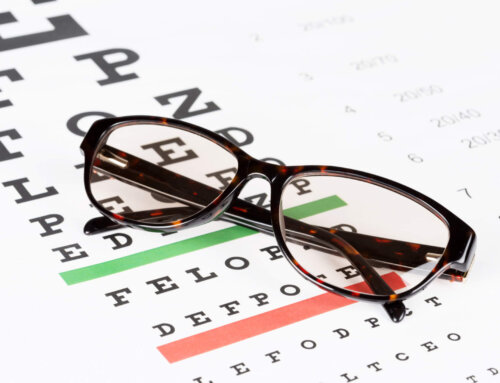Whichever way you try to spin it, it has been an indisputable fact for many years that some drivers, just don’t like cyclists. On the face of it there’s no obvious logic to this dislike that often borders on hatred. After all, both motorists and cyclists are legitimate road users and it’s not like cars or bicycles are new inventions.
If you ask a motorist why they dislike cyclists so much, you are likely to get a mixed response.
“They hog the road.”
“They insist on getting in your nearside blind spot at traffic lights.”
“They ride two abreast.”
“They look ridiculous wearing all that lycra!”
“They are not completely human!”
Why do cyclists really annoy drivers so much?
According to a theory expressed in an article on the BBC website by Tom Stafford, the reason why motorists hate cyclists is ‘because they (motorists) think they (cyclists) offend the moral order’. According to Tom, driving is a moral activity, with rules and regulations to be followed. He accepts that there are good and bad drivers, but in effect, this all works as long as the rules of the road are generally obeyed: stay in your lane, use your indicator as required and give and take in fairly equal measures. All fine. It works.
Then you have cyclists coming along doing things that drivers can’t do, like overtaking queuing cars, going slower than motorists, or overtaking on the nearside. Worse still, so the theory goes, they don’t pay any road tax or insurance.
Stafford says: “Deep within the human psyche… is an anger at people who break the rules, who take the benefits without contributing to the cost. And cyclists trigger this anger when they use the roads but don’t follow the same rules as cars.”
It should be pointed out that Stafford’s article is not anti-cyclist, far from it and nor does he imply cyclists habitually break the rules. It is more about the perception that some motorists have of cyclists.
Are the recent amendments to the Highway Code likely to help in fostering better relationships between motorists and cyclists?
The most headline catching amendment to the Highway Code in January 2022, was the one that introduced the concept of a hierarchy of road users. Drivers now bear more responsibility to be on the lookout for the welfare of vulnerable road users, with pedestrians at most risk of all, followed by cyclists.
In theory, the new hierarchy doesn’t tell us anything that we shouldn’t already be doing. If we are driving a car, we need to be mindful of those who do not have the protection, power, or ability to get out of a dangerous situation, in the way that a car driver has. We need to tailor our driving accordingly, to ensure the safety of any pedestrians, cyclists, or horse riders we encounter on our journey. It has always been so.
However, the amendments go further and reinforce the notion that to achieve the intentions of the new hierarchy, there need to be positive rule changes for the benefit of cyclists. For example:
- When overtaking cyclists at speeds up to 30mph, drivers should leave at least 1.5 metres between their vehicle and the cyclist.
- When cyclists are going straight ahead at junctions, they have priority over traffic waiting to turn into or out of a side road (unless road markings indicate otherwise.)
- Drivers and motorcyclists should give priority to people cycling on roundabouts.
- Cyclists may ride in the centre of their lane when on quiet roads or streets or in slow moving traffic. In addition, they are advised, on busy urban roads, to ride at least 0.5 metres from the kerb. It may also be safer for cyclists to ride two abreast in these situations.
So, how have the cyclist favouring Highway Code amendments been received?
Even before the amended rules came into force, the press made their feelings known about the changes to the Highway Code, some more forthrightly than others.
“Idiotic! Drivers react with fury to Highway Code changes that pander to cyclists”, howled the Daily Express.
“The day cyclists took over the roads”, fumed the Daily Mail.
Several months on the debate has settled down – a little at least.
You can usually rely on the RAC to provide a balanced view. The headline to a recent news article on its website recently asked of its readers,
“Are the latest changes to driving rules causing more conflict on our roads?”
The news item accompanying the headline revealed the results of a survey carried out by the motoring organisation which suggested that almost 60% of UK motorists surveyed believe the introduction of a new hierarchy of road users will result in more conflict, not less.
The Telegraph carried a headline, some two months after the changes came into force, that read:
“The cycling wars taking over the countryside”
The article accompanying the headline almost resigns itself to the fact that conflict between cyclists and motorists is here to stay. In fact, the author’s message is that the ‘battleground’ has now spilt over into the countryside because the Highway Code now suggests that on rural roads it may be safer not only for cyclists to ride in the middle of their lane, but also to ride two abreast: a sensible safety manoeuvre for cyclists safety, but conversely one that turns some motorists purple in the face.
The truth of the matter is that the disdain some motorists have for cyclists is not going to be greatly swayed one way or the other by whether the Highway Code suggests cyclists should ride two abreast or have priority at some road junctions.
The animosity has more complex origins and some of its roots may have something to do with the fact that Britain lags well behind other countries in the development of cycle friendly cities. This is despite a flurry of new cycle lanes appearing over the past few years as part of a government commitment to invest a total of £2 billion in improving facilities for cyclists and walkers by 2024.
Whatever the reason for the amount of animosity directed at cyclists, last year 141 died in cycling accidents, a 5% increase from the previous year. An average of 83 cyclists suffered serious injuries as a result of accidents, every week. Many cyclists injured in accidents caused by careless motorists decide to ask specialist personal injury solicitors to bring cycling accident claims against the driver responsible for the accident.
The protection of vulnerable road users has to be paramount and if that means some inconvenience, and the swallowing of some pride so be it. It’s better than causing a cycling accident where someone is killed or seriously injured.

